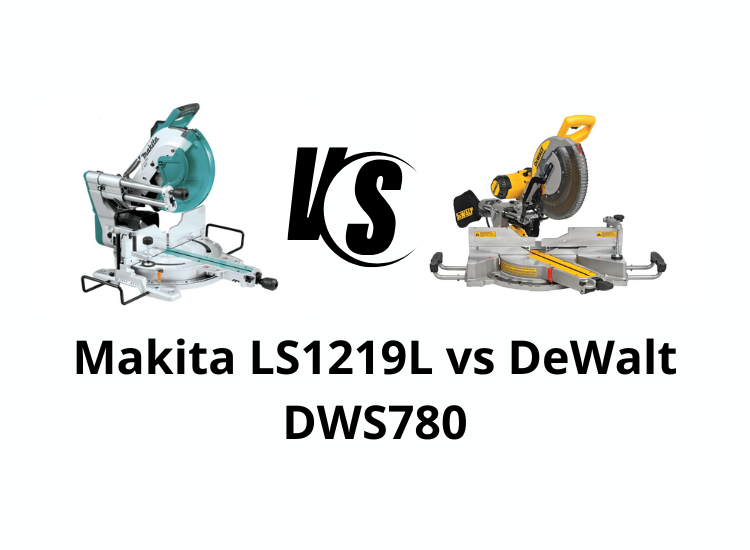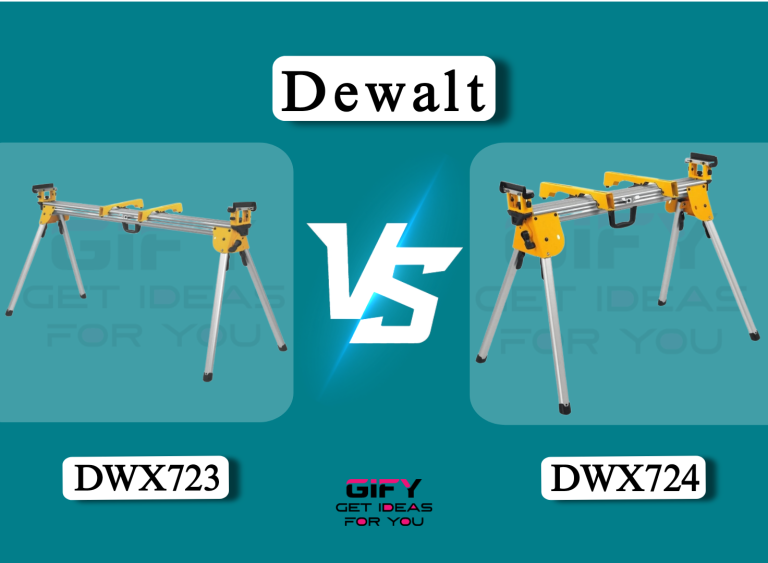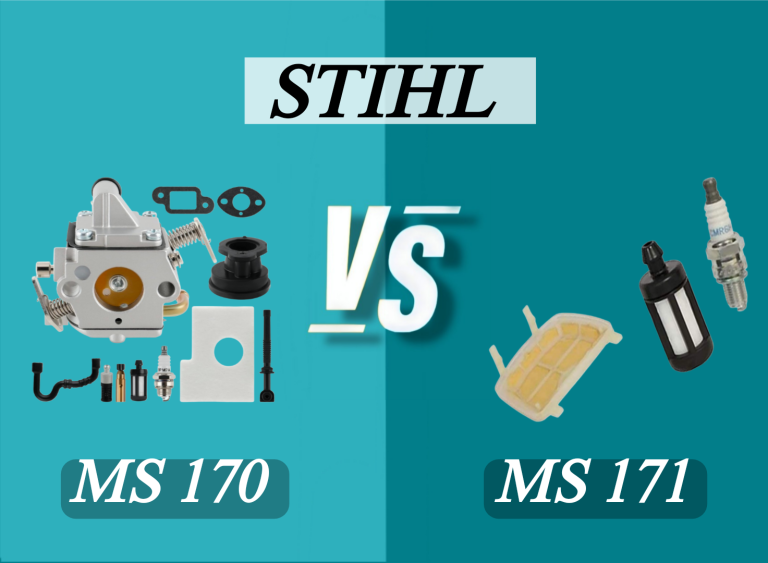DeWalt DWS713 vs DWS715: The DWS713 comes with a 10-inch blade that fits well for smaller projects. It offers strong performance, precise angles, and a lightweight design. Many users prefer it for quick cuts and portable jobs.
The DWS715 uses a 12-inch blade. This gives more cutting capacity and makes it better for larger lumber. It carries similar features to the DWS713 but delivers higher capacity for professionals.
Both saws include stainless-steel detent plates with 14 positive stops. These stops give accurate cuts without wasting time. The base fence support and tall sliding fences also make them versatile.
The bevel range is similar for both models. They tilt left up to 48 degrees and right up to 3 degrees. This feature helps with bevel cuts for trim, molding, or frames.
The key difference rests in cutting capacity. The DWS713 handles 2×6 lumber at 90° and 2×4 at 45°. The DWS715 manages 2×8 at 90° and 2×6 at 45°. For larger projects, the DWS715 clearly offers more reach.
Another difference is the vertical baseboard capacity. The DWS713 supports 4-1/4 inches. The DWS715 supports 5-1/2 inches. That extra height makes a difference with wider trim work.
The DWS713 is lighter. This makes it easier to carry and store. The DWS715 is bigger and a little heavier. Still, it balances weight with greater capacity.
Both saws run powerful 15-amp motors with no-load speeds reaching 5000 RPM. This ensures clean cuts through wood materials. Despite the different blade sizes, the motors deliver equal strength.
In this guide, we will compare both saws feature by feature. You will see where each model shines. We will also review them separately with pros and cons. A quick table and rating chart will help you decide faster.
Let’s explore the full comparison of the DeWalt DWS713 vs DWS715 to see which is the better choice for your needs.
Quick Comparison Table
| Feature | DeWalt DWS713 | DeWalt DWS715 |
|---|---|---|
| Blade Diameter | 10-inch | 12-inch ✅ |
| No-Load Speed | 5000 RPM ✅ | 5000 RPM ✅ |
| Max 90° Crosscut | 2×6 | 2×8 ✅ |
| Max 45° Crosscut | 2×4 | 2×6 ✅ |
| Vertical Baseboard Capacity | 4-1/4 in. | 5-1/2 in. ✅ |
| Positive Miter Stops | 14 ✅ | 14 ✅ |
| Weight | Lighter ✅ | Heavier |
| Motor | 15-amp ✅ | 15-amp ✅ |
| Bevel Direction | 0°-48° left, 0°-3° right ✅ | 0°-48° left, 0°-3° right ✅ |
DeWalt DWS713 Overview
The DeWalt DWS713 is a 10-inch compound miter saw designed for accuracy and portability. It suits contractors who need quick setup and reliable performance on job sites.
The stainless-steel detent plate with 14 stops makes adjustments easy. The machined base fence ensures stability during cuts. Its lightweight build allows smooth transport without strain.
The tall sliding fence supports 4-1/4 inch baseboards vertically. This gives more freedom for trim work and smaller crown moldings. The bevel range supports angled cuts with clean precision.
Pros
- Lightweight and portable
- Precise cutting system
- Affordable compared to larger models
Cons
- Smaller blade capacity
- Limited vertical cut
- Less suitable for large lumber
Key Feature Summary
10-inch blade, portable weight, 14 miter stops, precise fence, bevel cuts up to 48° left and 3° right.
DeWalt DWS715 Overview
The DeWalt DWS715 is a 12-inch compound miter saw built for larger capacity. It is ideal for professionals handling big trim pieces or thicker wood.
Like the DWS713, it offers 14 positive stops for accurate adjustments. Its machined fence and stable frame ensure smooth performance. The larger blade covers a broader range of projects.
The tall sliding fence supports 5-1/2 inch baseboards vertically. It also provides deeper crosscut reach, making it stronger for heavy-duty applications.
Pros
- Larger blade for bigger projects
- Supports taller baseboards
- High crosscut capacity
Cons
- Heavier to carry
- Takes more storage space
- Higher cost
Key Feature Summary
12-inch blade, supports 5-1/2 inch vertical cuts, wider crosscut reach, precise 14 stops, bevel flexibility.
Feature-by-Feature Comparison
Blade Diameter
The blade diameter decides how much lumber you can cut in one pass. The DWS713 has a 10-inch blade. This size is perfect for small to medium trim jobs. It offers clean results on lighter material without wasting energy.
The DWS715 carries a 12-inch blade. This size adds extra reach. It can slice through wider and thicker boards in fewer passes. The large blade suits professional projects like deck framing or heavy molding.
A 10-inch blade costs less to replace. It is also easier to find in local stores. The 12-inch blades are more expensive, yet they bring stronger performance for serious woodworkers.
If your focus is portability and budget, the DWS713 fits better. If you work with heavy wood daily, the DWS715’s blade saves time and effort.
No-Load Speed
Both saws feature a 5000 RPM no-load speed. This high speed helps cut through tough wood quickly. The motors are equally rated at 15 amps, giving strong power output for precise work.
At 5000 RPM, the blades spin fast enough to deliver clean cuts with fewer splinters. This means smoother edges on trim and molding. Both tools perform equally here, so speed is not a deciding factor.
While the blade sizes differ, the motors handle them efficiently. Even with larger blades, the DWS715 runs at the same RPM without slowing. The DWS713 keeps the same sharp speed with smaller blades.
In this category, it is a tie. Both saws deliver fast rotation that ensures sharp, professional cuts every time.
Max 90° Crosscut
The crosscut capacity defines how wide lumber can be cut at a straight 90° angle. The DWS713 handles up to 2×6 wood. This is enough for common tasks like framing small structures or cutting trim boards.
The DWS715 pushes the limit to 2×8. That extra width is helpful for thicker baseboards, large beams, or outdoor projects. With one pass, it saves you from flipping the board to finish the cut.
This difference impacts users who often work with construction-grade lumber. For small household tasks, 2×6 is usually enough. But for contractors, the 2×8 reach makes work faster and smoother.
Here, the DWS715 takes the win. Its wider capacity makes it more versatile for larger wood sizes.
Max 45° Crosscut
Angled cuts are key in trim work. The DWS713 cuts 2×4 lumber at 45°. This works for standard baseboards and crown molding. It delivers precise bevel angles that fit corners neatly.
The DWS715 offers 2×6 cutting capacity at the same 45°. This advantage is noticeable when working on wider trims or diagonal joints. It cuts deeper angles without needing extra passes.
Users who do small carpentry jobs will find the DWS713 enough. But for large-scale renovation or construction, the DWS715 adds confidence with larger angled cuts.
The DWS715 clearly leads this feature. Bigger angled cuts mean broader use across different projects.
Vertical Baseboard Capacity
The DWS713 supports vertical cuts up to 4-1/4 inches. This works fine for standard-size baseboards found in most homes. It gives accurate corner fits with minimal adjustments.
The DWS715 extends vertical support up to 5-1/2 inches. That extra inch matters in modern homes where tall baseboards are common. Larger trim fits smoothly without manual trimming.
Both saws use tall sliding fences to stabilize the boards. This ensures the wood stays firm during vertical cuts. For average work, the DWS713 is okay. For taller trim, the DWS715 is the better option.
This feature is a win for the DWS715. Bigger baseboard capacity makes it ideal for detailed interior finish work.
Positive Miter Stops
Both saws share 14 positive miter stops. These stops lock the blade at common angles. This speeds up repetitive work like framing and trim installations.
The stops reduce guesswork. Instead of measuring each time, you set the angle and cut right away. It makes the saw easier to use for both beginners and experienced workers.
Since both DWS713 and DWS715 offer equal stops, there is no real difference here. Accuracy and convenience are the same for both models.
This feature results in a tie. Both saws are equally reliable for quick angle settings.
Weight
The DWS713 is lighter than the DWS715. Its compact frame makes it easier to carry between job sites. For contractors moving tools daily, the lighter build is helpful.
The DWS715 is heavier due to the bigger blade and larger frame. While this makes it harder to transport, it adds stability during cutting. Heavier saws reduce vibration and keep cuts steady.
For portability, the DWS713 wins. For stability, the DWS715 is better. The choice depends on whether you value easy transport or solid performance on a bench.
This feature is balanced but slightly favors the DWS713 for those needing lightweight gear.
Motor
Both saws are powered by 15-amp motors. This is the standard size for professional miter saws. The motors provide enough strength to handle both softwood and hardwood materials.
Even with different blade sizes, both motors keep strong performance. The DWS713 runs efficiently with the smaller blade, while the DWS715 uses the same power for bigger cuts.
Users can expect reliable output from both. The motors do not slow down easily under load. This makes them suitable for long hours of cutting without overheating.
In terms of motors, both are equal. Neither saw has an advantage over the other.
Bevel Direction
Both saws share the same bevel design. They tilt 0°–48° to the left and 0°–3° to the right. This allows flexible bevel cuts for different angles and joints.
The left-leaning tilt helps with standard trim cuts. The small right tilt adds extra convenience. Both models handle angled jobs smoothly.
Since both offer identical bevel ranges, there is no clear winner. They are equally capable for bevel applications.
This feature is a tie between DWS713 and DWS715.
DeWalt DWS713 Detailed Review
We tested the DWS713 on trim projects and small framing tasks. The saw delivered clean, accurate cuts with little effort. Its 10-inch blade was easy to control and produced neat results.
One thing you will notice is the lightweight body. Carrying it around is simple. It takes less space in the workshop compared to larger saws. For mobile carpenters, this makes a difference.
The tall sliding fence gave stable support for 4-1/4 inch baseboards. During crown molding work, the angles locked smoothly into place. The 14 miter stops saved us time on repetitive jobs.
The bevel action felt smooth, though the right tilt is limited to 3°. For basic bevel cuts, it worked fine. It just lacks the larger crosscut reach of the 12-inch model.
💡 Pro Tip
Use the DWS713 for trim and light framing work. Its compact frame is perfect for smaller projects without sacrificing accuracy.
☠️ Warning
Avoid forcing the saw on thicker wood. The smaller blade is not meant for heavy-duty beams.
DeWalt DWS715 Detailed Review
We tested the DWS715 on large lumber and wide baseboards. The 12-inch blade handled them with ease. It cut through 2×8 wood in a single pass, saving time and energy.
The saw felt solid during work. Its heavier frame reduced vibrations. Cuts came out smooth and precise. The tall fence supported 5-1/2 inch baseboards without slipping.
For professionals, this tool feels more powerful. The bevel adjustments are the same as the DWS713, but the bigger blade makes a real difference. The motor held up even under constant use.
The downside is weight. Carrying it from site to site can be tiring. Still, for shop use or large construction, the added capacity makes it worth the effort.
💡 Pro Tip
Choose the DWS715 if you often cut wide boards or tall baseboards. The larger blade saves time on big projects.
☠️ Warning
Make sure you have enough space to store the DWS715. Its larger frame takes more room compared to smaller saws.
Ratings Table
| Category | DeWalt DWS713 | DeWalt DWS715 |
|---|---|---|
| ⚡ Power |
90%
|
95%
|
| 🔧 Cutting Capacity |
70%
|
95%
|
| ⚙️ Portability |
95%
|
70%
|
| 🎯 Accuracy |
90%
|
92%
|
FAQs
Which saw is better for small DIY projects?
The DWS713 is lighter, easier to carry, and has a 10-inch blade. This makes it better for small DIY jobs, trim work, and projects with limited space.
Is the DWS715 worth the extra cost?
Yes, if you handle larger projects. The 12-inch blade, wider crosscut, and taller baseboard support make it worth the price for professionals needing extra capacity.
Do both saws use the same motor power?
Both have 15-amp motors with 5000 RPM speed. The performance is equal in terms of raw power. The difference comes from blade size and cutting capacity.
Which one is easier to store?
The DWS713 is smaller and lighter, making it easier to store in small workshops or garages. The DWS715 needs more space due to its larger frame.
Can I use both saws for crown molding?
Yes, both support crown molding cuts. The DWS715 offers more support for taller trim at 5-1/2 inches, while the DWS713 supports 4-1/4 inches.
Final Verdict : DeWalt DWS713 vs DWS715
Both DWS713 and DWS715 are excellent compound miter saws. The DWS713 stands out for portability, smaller footprint, and affordability. It suits DIY users and small trim jobs perfectly.
The DWS715 wins in cutting capacity. Its 12-inch blade handles 2×8 lumber and tall 5-1/2 inch baseboards with ease. It is heavier but more versatile for large professional projects.
If you need a saw for light work and mobility, pick the DWS713. If you want power, wider cuts, and professional performance, the DWS715 is the smarter choice.
- DWS713 = Best for portability and DIY work.
- DWS715 = Best for heavy-duty cutting and professional projects.
- Both = Reliable motors, accuracy, and bevel functions.









